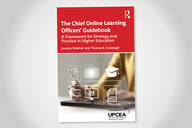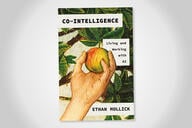You have /5 articles left.
Sign up for a free account or log in.
“New education technologies are rarely disruptive but instead are domesticated by existing cultures and systems,” write Justin Reich and José A. Ruipérez-Valiente (“The MOOC Pivot,” Science 11 Jan 2019: Vol. 363, Issue 6423, pp. 130-131, DOI:). While the authors view this as a bug in higher education, in fact it is a feature.
Higher education is still sorting out how best to integrate the MOOC innovation into its core. In the history of higher education, the 6 years that have passed since the dawn of MOOCs is a blip. It is true that the original hype was overblown. But it is unfair to criticize institutions and providers like Coursera and edX for figuring out where the technological innovation can mesh with learner demand and their own capabilities.
The authors write that “MOOC providers are reorienting to compete directly with these companies in one market segment: professional master's degrees… [that are] one-half or one-quarter as expensive as typical U.S. professional online credentials, with the bulk of savings coming from a combination of larger class sizes, fewer or no synchronous sessions, reduced contact with instructors, and more autograded assignments.”
But they miss the crucial innovation of stackability, which is more important than the features they note.
Stackable credentials, as conceived by edX’s MicroMaster and Coursera’s MasterTrack, link open courses to more significant credentials that have proven value in the labor market. Paraphrasing a description from MIT, which developed the concept, learners who pass an integrated set of open courses earn a credential that allows them to apply for accelerated, on campus or online master’s degree programs.
Stackability is not just a marketing strategy (to reduce recruiting costs by attracting learners from open courses); stackability is a learning strategy. Educational providers meet learners where they are, and provide the right level and amount of learning, and an appropriate credential, for their needs. The legacy of MOOCs and derivative innovations will be expanded access, lifelong and lifewide learning, and personalization at scale. There is also a real opportunity to finally bend higher education’s cost-curve without compromising on quality. The impact will not be limited to professional masters students, as the authors claim. Even after six short years, this is already not the case.
This stackable approach offers the promise of using performance in online courses, rather than flawed standardized tests, as the basis for admissions. With better predictive modeling techniques there will be opportunities to reimagine admissions for all academic programs, not just in graduate professional education. Learners will move further and wider through curricula as a result of stackable options, a more nuanced and thoughtful view of grading and assessments, and smart use of technology that supports informed choice.
The most important global problems to solve for are exceedingly complex and impact diverse populations and systems. Our best hope for solving them is to dramatically expand access for learners. A new ecology of credentials has emerged on the back of MOOCs and is bolstered by stackability. This crucial innovation creates new catalysts for access, engagement, and personalization at scale and provides great hope for a future of inclusive and empowered problem solving.
Universities are at one and the same time powerfully conservative stewards of culture and systems and massively innovative creators and adopters of new ideas, technologies, and forms of expression. The fact that higher education is iterating the early concept of a MOOC into something far more powerful is actually a perfect example in practice. It should be celebrated, not decried.
Matthew Rascoff (@mzrascoff) leads the Learning Innovation team at Duke University. James DeVaney (@devaneygoblue) leads the Academic Innovation team at the University of Michigan.




